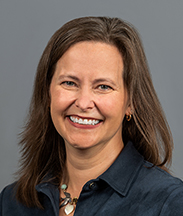Harvard’s Claudia Goldin is our newest Nobel laureate in economics. Her accumulated efforts have helped us better understand women’s roles in the labor market—both historically and in contemporary society.
It’s worth noting that the economics prize isn’t one of the awards funded by Alfred Nobel’s initial endowment. While the original prizes—physics, chemistry, physiology/medicine, literature, and peace—were first awarded in 1901, the economics award came much later. The “Sveriges Riksbank Prize in Economic Sciences in Memory of Alfred Nobel” (its official name) is funded by the Bank of Sweden and wasn’t first awarded until 1969.
In recent years, it’s become more common for the economics award to be shared by two or three scholars working in related areas. In the past 15 years, for example, the prize was given to a single recipient just three times: to Jean Tirole in 2014, Angus Deaton in 2015, and Richard Thaler in 2017. This is just one of the ways in which this year’s award is notable: Goldin didn’t have to share it with anyone.
Goldin’s body of work is impressive. It has helped us understand the mix of cultural, social, and market-based forces that drive labor market outcomes for women, including their participation, wages, and decisions regarding whether and when to have children. Perhaps most impressive of all, though, is Goldin’s commitment to high-quality research: while she’s careful in her descriptions and analysis of labor market dynamics as they relate to women, she rarely takes a position on how to change those dynamics if you don’t like them. And we like that about Goldin; she’s an academic researcher to her core.
What are the insights we’d be missing in the absence of her prize-winning research?
For starters, though we tend to think of female participation in the labor force as a relatively recent phenomenon—driven, at least in part, by artificial contraception, the equal-rights movement, and greater access to higher education—it was quite high for much of human history, mainly out of necessity. By examining sources such as time-use surveys, census data, and industrial statistics, Goldin pieced together evidence that the fraction of women participating in the labor force was much larger at the end of the 1890s than had previously been thought. Moreover, this phenomenon seems to stretch back as far as the late 1700s.
For at least a century, many women participated in the labor force. Yet this fact was missed when many census and other public documents listed “wife” as a married woman’s primary occupation. While they were certainly wives, many also labored at tasks beyond what economists might refer to as “domestic production.” For example, women worked alongside their husbands on farms or in family businesses. Children often did as well, out of necessity, though Goldin’s work deals mainly with adult female participation. It was also common for women to take on work outside family farms and businesses—perhaps working in cottage industries, where production could take place either in the family home or somewhere nearby. One of Goldin’s many striking findings: the employment rate for married women at the close of the 19th century was nearly three times greater than previous estimates indicated.
As industrialization progressed, with its ensuing urbanization and growth in factory jobs, Goldin finds that married women grew less likely to participate in the labor force. The mix of available jobs was shifting away from the sort of work that could be carried out within the family home or at least nearby, close to children and other family members.
Women returned to the labor force in the 20th century, however, and Goldin’s work points to several key factors driving this return. First, while industrialization reduced the likelihood that women—especially married ones—would enter the labor force, a large and growing service sector that hadn’t previously existed provided new job opportunities for women. Changing cultural norms and expectations, as well as the increased pursuit of higher education, also contributed to this trend. Goldin’s work highlights how expectations as to whether and how long they would work informed young women’s investment in higher education, leading to slow and persistent changes over time.
Goldin and others point to artificial contraception as another factor in women’s growing presence in the workforce. The ability of young families to choose how many children to have—and when—made it possible for many women to begin a career, step away from it when parenting called, and return to the workforce later. This observation also informs Goldin’s work regarding earnings gaps between men and women. An abundance of research now indicates that wage differences between men and women are small prior to the arrival of a family’s first child. Almost immediately, earnings for women fall relative to those of men. And this event can lead to persistent differences between women and men, especially in professions that require long hours or unpredictable schedules. Stated another way, it’s not surprising that the percentage of commercial airline pilots who are female is significantly lower than the percentage found among local elementary school teachers. Advancement as an airline pilot is tough: even after completing flight school—which can cost $60,000+ dollars—flying for a commercial airline requires at least 1,500 hours. And being a pilot, by definition, requires being away from home and family—whether or not a pilot is female. While female labor-force participation has risen steadily throughout the last century, it’s happened in jobs and careers that offer flexibility not found in other occupations.
One factor you likely didn’t see mentioned in news reporting about Goldin’s work is the role played by modern household appliances in increasing female labor-force participation rates. Yet it’s widely agreed among economists that modern inventions—like electric and gas stoves (instead of wood-burning ones!), vacuum cleaners, indoor automatic washing machines and dryers, microwave ovens, and even the Swiffer!—have made it possible for families to save time doing the household tasks that confront every family and to think creatively about what to do with all the time they’ve saved. For many, this has meant that families of all kinds have more freedom to make choices that are the best fit for them, including having more women earning money outside the home.
While we admire Goldin’s steadfast work in this area, we also appreciate the fact that she avoids the temptation to step into the role of policy advocate. Goldin is a serious economist who asks great questions, finds data where no one else can, and follows the trail wherever it leads. She’s not looking for any “right answers”: she’s merely trying to understand the world better.
Years ago, John Neville Keynes—father of John Maynard Keynes—identified three forms that economics can take. The first, positive economics, confines itself to questions of facts and empirical relationships. The second, normative economics, involves value judgments about how things should be. For example, positive economics can tell you what the unemployment rate is but it can never tell you whether it should be lower and why. While most of us have heard of these first two—positive and normative—Neville Keynes’ third form of economics is what he referred to as “art”: the part of economics that can advise you, based on positive economics, how to go about pursuing a particular normative goal.
Goldin’s work provides a variety of insights on what has allowed women to enter and remain in the labor force: the ability to work at or close to home, control over when and how many children to have, and flexible schedules. We are thankful that, throughout her brilliant career, Goldin has remained steadfastly in the realm of positive economics—leaving the “art,” the squabbling over the “right answer,” to politicians and interest groups.


